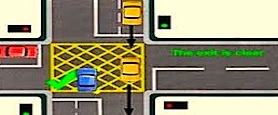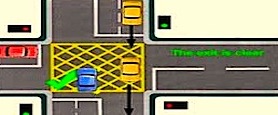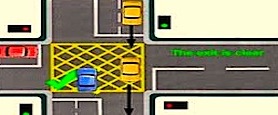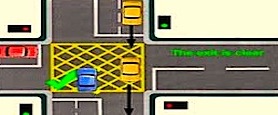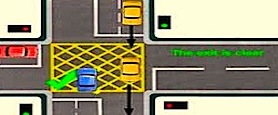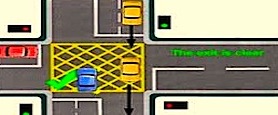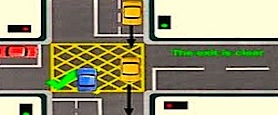dear sheila jordan who are you will you be my next project its writ in latin in the latin language & will make you a star (my favourite word is french it is d-u-v-e-t and is made of five letters which are all different (also it is not a anagram of anything close like other objects ie fringe or reindeer which is harder than you think to pronounce/ dear sheila jordan I think I forget you for three weeks when I was in ireland/today I went to these streets: druid lane and to a disco/ there I hear of a man in a see-through box but how can this be/ he is not in my book? dear sheila jordan this is funny/ 'richard is stranger than judy' but you won't know this without you have seen a tv/ no I am lying again I mean a fridge a cold dark place for the lettuce/ it is 11.14 pm and I will now sing wildwood...
issue 4
An Irregular Magazine More about Junction Box
This is a series where poets get away from their jobs as poets. Lyndon suggested something for Junction Box that wasn't about literature. This is a stretch for me, culture is where I live. But I can reach out into folklore. I have written about something crucially important to me, which I am afraid does involve literature. It is a feuilleton, a kind of Sunday morning piece. The theme is Celtic culture. The start point is a Scottish Gaelic folk tale, collected (twice) in the late 19th century, The Knight of the Red Shield (Gaisgeach na sgeithe deirge), and a phrase in it which runs the four red parts of the world, ceithir ranna ruadh an domhain. I plan to go in circles, so the start point doesn't matter. Maybe the real start point is me, trying to study for a degree course in Anglo-Saxon,...
The radio in the car was playing a pent-up type of jazz as I arrived. A tenor sax line that headed like a freight train towards a wall, then retreated at the same velocity. It was a kind of brinkmanship, drawing attention to the space, the moment of the ‘wall’, and the energy going into it was huge but controlled. Ian Friend and I were meeting at a gallery, an exhibition by some young artists whose work was both understated and deceptively simple1. Friend had written the catalog essay and so my mind turned to Jasper Johns and Agnes Martin whom he had quoted. Thoughts about a different, impartial verisimilitude; how nature lends its weight to the purely abstract, anchoring a work between earth and air, continued in my mind as we walked the short distance back to Ian’s studio. The day...
If you’re reading this you are probably an addict reader. If you’re an addict reader and you’ve lived long enough you must have started to wonder what reading has to do with remembering. The best books are those you remember enough to want to re-read and then they seem like nothing you’ve ever read before. And after all a book – and more so a library – is itself an embodiment of memory which makes personal remembering redundant. So long as you can remember exactly which place – then lo! the words are there, they never went away. That’s why Socrates didn’t like writing. Lucky for him he never saw the internet, the last straw for anamnesis. Re-reading certain books such as A la Recherche returns you to a place so familiar you feel you can only have dreamt it but that’s...
When I was a child I thought reproductions were art. We had on our wall a print of Corot’s ‘Bent Tree’ which was, as far as I knew, the real thing. I grew up to discover that there were ‘original’ works out there somewhere. As it turned out some very fine art works were easily accessed in Melbourne at the National Gallery of Victoria. Nonetheless my fascination became inseparable from the notion of movement; the idea of travel. I would try to imagine myself in the places the artists referred to. I would read about literary life in Paris in the 1920s, London in the 1940s, New York and San Francisco in the 1950s. Places were tied to literary events. I became an avid consumer of of books like David Daiches’ mappings of British literary life or (later) Bill Corbett’s books about New...
In the west of Utah, there stands a 65 foot natural arch of entrada sandstoneLocally, it is known as the “Schoolmarm’s Bloomers” or the “Chaps,” but most people know it as the Delicate Arch. At one time, it was a sandstone fin. But over time, the middle eroded, opened like a mouth to the long red desert and mountains beyond. The first time I visited the Delicate Arch, I was driving cross-country with my husband Dan. We had been married just over a year, and in that time, I had miscarried two babies. I had given up trying to have children, and had suggested the drive to San Diego as a distraction for us both. I was pregnant when I first went to live in the States, but a few days after I arrived in the US, we found out about the miscarriage. We had been called in to the obstetrician’s...
I have a revision plan. Time to rampage in my wreckage, re-shape the shadow. Time was running down throughout 1968. I was notating my young entropy: I have an infection of the pen. Confined to the house of words. The cries of the baby are speeding up and the streets are partitioned with glass. Priest in the tabernacle, head in a bowl of oil. His animal gored bystanders under the tree of sin. I had failed to read the operating manual for my head. I had no idea what its sub-systems were doing. Instead I took the lead role of holy ghost in the meat-engine, an ethereal tripester. No chemicals were used. I let the words talk me into the naughty corner. I really tried to break Heisenberg’s Rule, too hard. TO READ THIS ARTICLE, CLICK HERE: SHADOW TIMES 17 to 24 Paul A....
MILAGROS MENGIBAR AND LUISA PALICIO: SALA JOAQUIN TURINA CENTRO CULTURAL, SEVILLA 07/02/2012 The concert begins on time at five minutes past nine - I have a good seat near the front - in today's Diario de Sevilla the Flamenco critic Juan Vergillos describes it as 'la experiencia flamenca mas intensa que ha vivido nuestra ciudad en anhos' (Keats says the excellence of every Art is it's intensity). I don't understand flamenco at all but the intensity was indeed overwhelming, frightening, soul devouring - tears salt tears streamed down my face - it was visceral, elemental, primitive, ancient - quite incomprehensible. Like Grief? I didn't know the names of the dancers but they are famous - Milagros Mengibar is around sixty - her face is like a mask of a Carthaginian Queen - tragic and resolute...
10 Feb 2011. Chris Vine flying over from Brazil. Together we are to perform our CD of the super-edited version of RORI: A BOOK OF THE BOUNDARIES, at Chapter Theatre, Cardiff. It was in the 1980s, on a bike ride, that I discovered the parish of Vaynor, with its 2 historic churches - one contained within the arms of the other, so to speak. When I set out on the bike that particular day, I had little expectation beyond that of seeing yet another stubby, stony Norman church set in a vale. But Vaynor was revealed as a place of magic, mystery, & terror, where the industrial giant palliated with Renaissance visions, suitably corrupted through Celtic modes of romance. Straightaway I began writing about it. & my friend Jan Leather, another Vaynor freak, dumped a large bundle of parish histories...
Until my mother died I had never worked from photographs. The static one-eyed perspective of the camera had always seemed to disqualify them as source material for paintings, even if I had wanted to. I studied art at a University in the late 1970’s, when televisions, wall texts and performance art bulked out the programmes of public galleries and shows by living painters were a rarity. Nevertheless I still believed in painting as a sustained and rigorous interrogation of the visible world in the pursuit of an underlying physical or social structure that was in some sense ‘true’ or ‘real’. This was a conviction I had bought in wholesale from those I considered to be the last exponents of serious figurative painting: David Bomberg, Frank Auerbach and Leon Kossoff. Using photographs...
I do not think an artist can describe his pain while he is in pain. As a citizen he might want to express an opinion or take an action confronting the urgency of facts. But as an artist he will do that on the terms of his art which requires a certain distance and elaboration of the circumstances, a process very different from, say, that of the journalist or the activist. Especially since, in recent years, we have heard almost everything from everyone in this public debate about the European crisis, this kind of elaboration is necessary. We need time in order to get a deeper understanding which will transcend the commonplaces and the too obvious truths. Cheslaw Milosz writes "...to remain aware of the weight of fact without yielding to the temptation to become only a reporter is one of the...
“[Postmodernity] is a universal dismantling of power-supported structures... a site-clearing operation.” Zygmunt Bauman, Intimations of Postmodernity Aspasia stands regally under a mandarin tree on the walkway between Panepistimiou and Academias Streets. Her marble bust is well-placed between these two main thoroughfares: University and Academy Streets, in English; it is where all the student gatherings and various demonstrations have taken place in the past four, maybe it's been five, years -- hard to keep track when one lives in the midst of a city in radical flux. Athens. A modern, European city that went from hosting a glamorous 2004 Olympic Games, to being one resonant of the anarchic streets of a city more like Cairo. Aspasia though is nonplussed; her nose is chipped and the...
